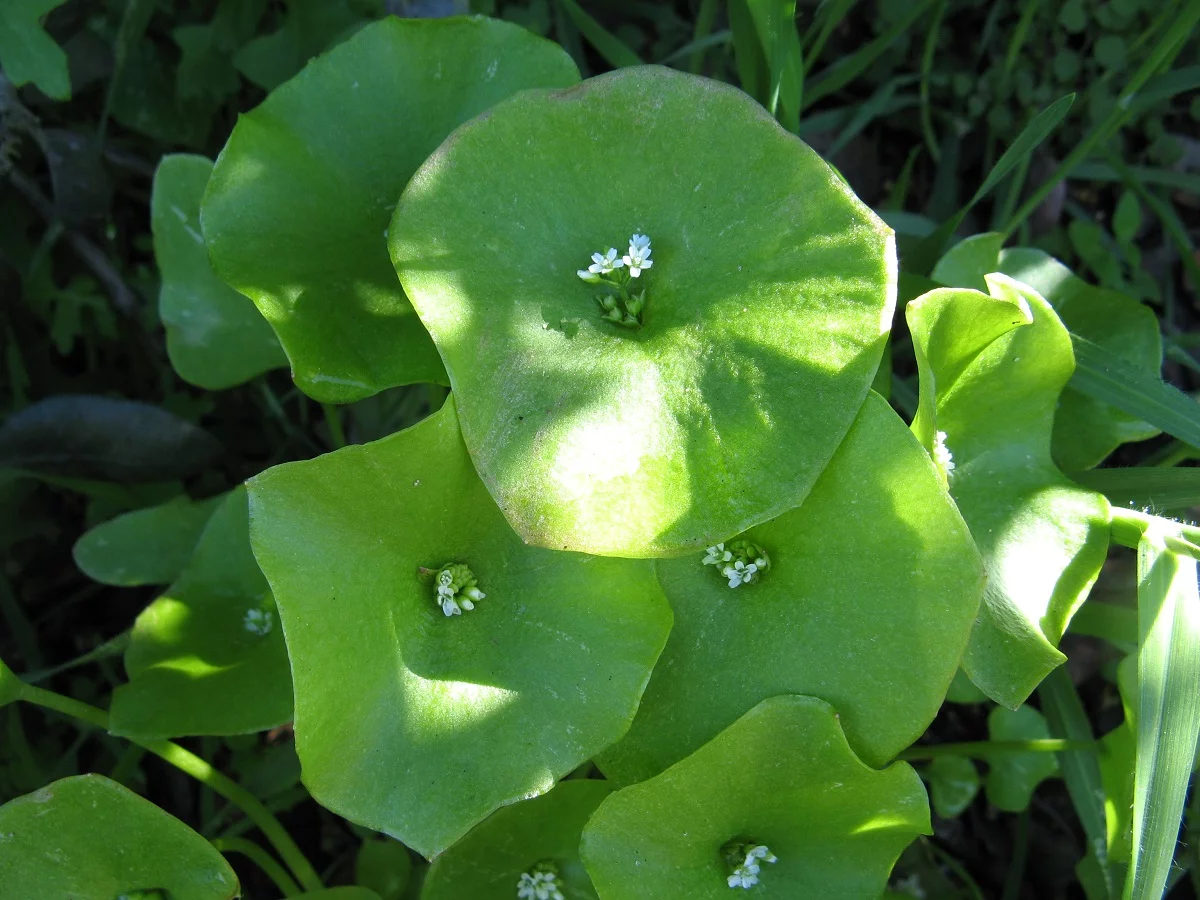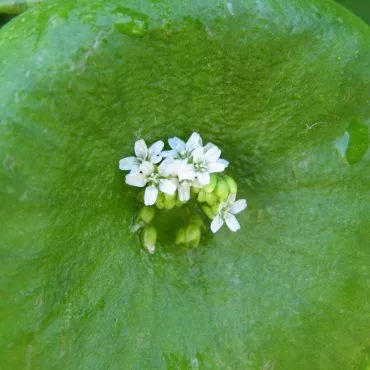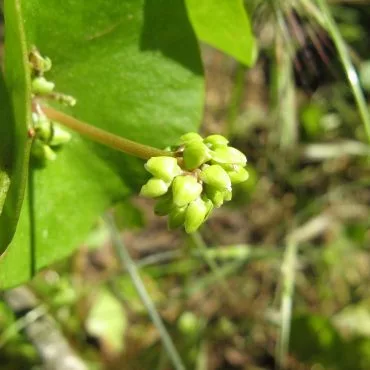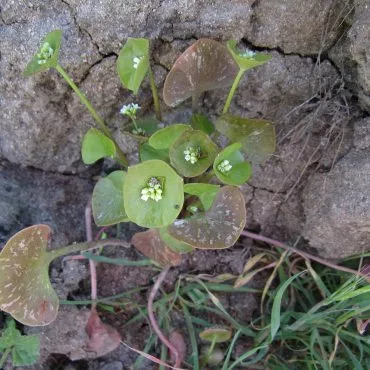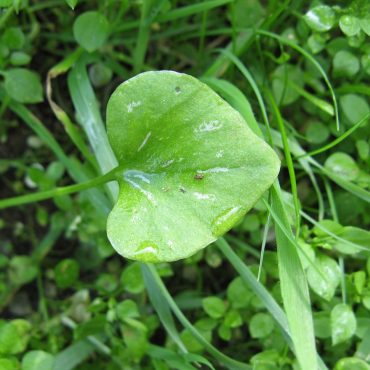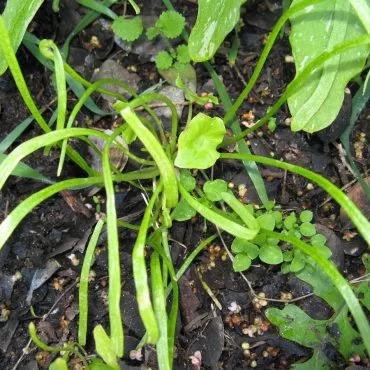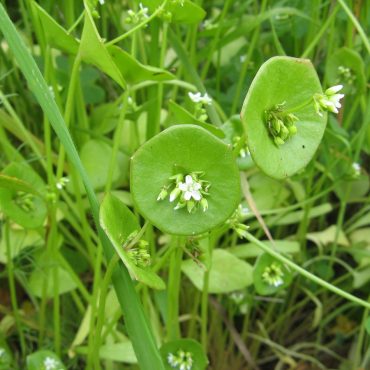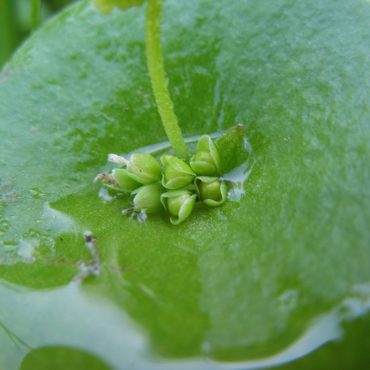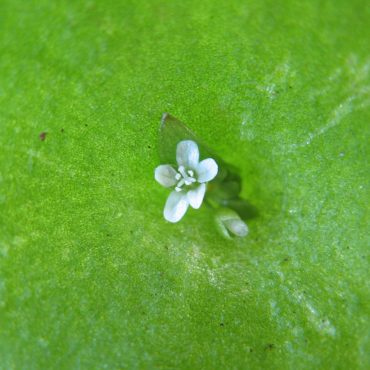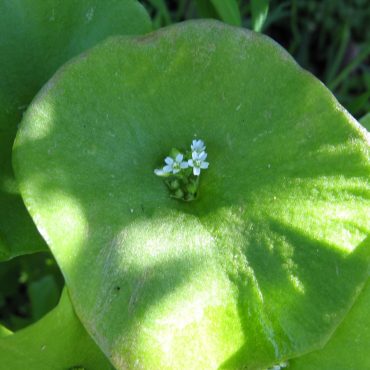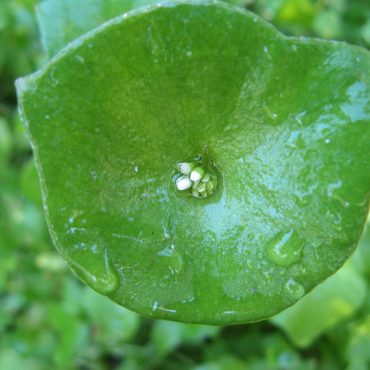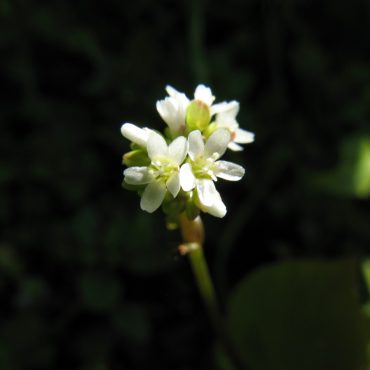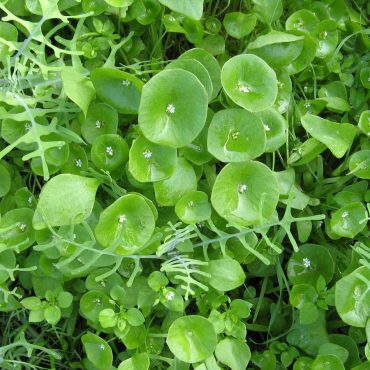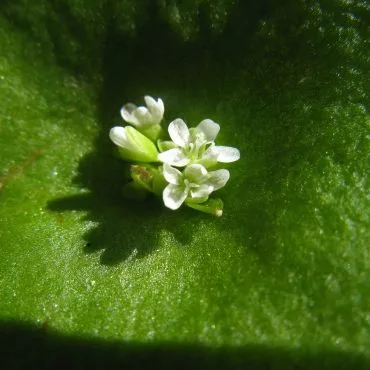Miner’s lettuce is a small, herbaceous, slightly succulent annual plant of early spring; it grows to 12 inches (30 cm) tall but is usually much smaller. Leaves are of three types. The earliest leaves are basal and are narrowly oblanceolate, narrowing to a short petiole. Later basal leaves are oval to triangular, held aloft on long petioles. The two cauline leaves lack petioles and are opposite on the stem, fusing at their bases to form a collar around the stem. The collar is rounded usually with two oblique angles which may be tipped with a minute point. Leaves are usually bright green, sometimes streaked with white and occasionally reddish. Leaves are variable in size; with little time spent, we located fused cauline leaves as small as 3/8 inch (0.9 cm) and as large as 3 1/2 (9.2 cm) in diameter. Leaf size and shape form the basis for division into subspecies.
Flowers occur in one or more clusters rising from the center of the fused leaves; the lowest cluster lacks a stem. Tiny flowers are bisexual, radially symmetrical, less than 3/16 inch (5 mm) across. The five white petals are usually rounded, but may occasionally be notched at the tip. There are two sepals, five stamens and one pistil with three elongate stigmas ascending to spreading. Bloom time is March to May in coastal Southern California1 but much later in more northern areas or at higher elevations.89
The fruit is a green egg-shaped capsule enclosed by the two sepals. There are usually three glossy black seeds, less than 1/8 inch (3 mm), each with a white spot at the point of attachment. When ripe, seeds are forcibly expelled from the capsule.

